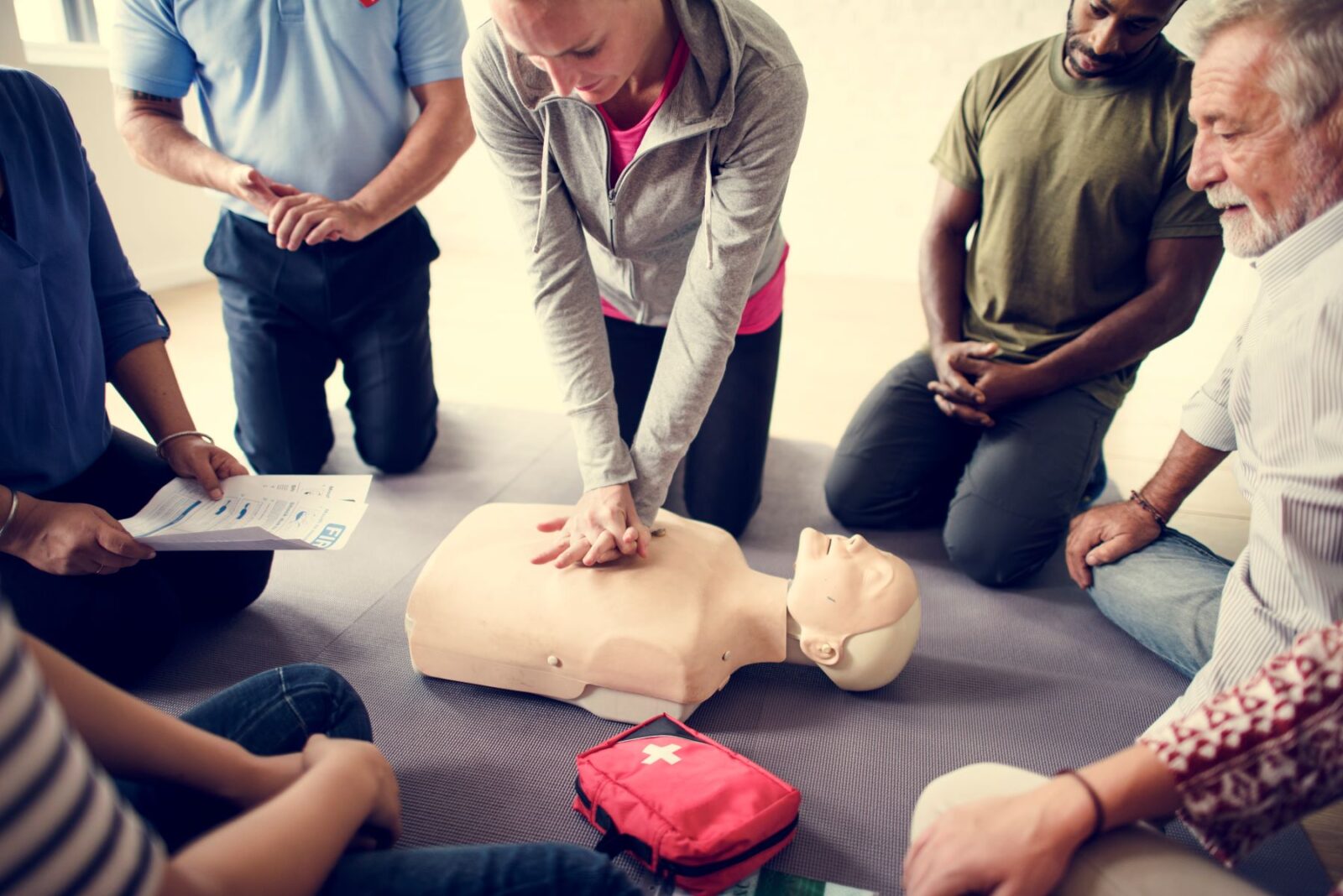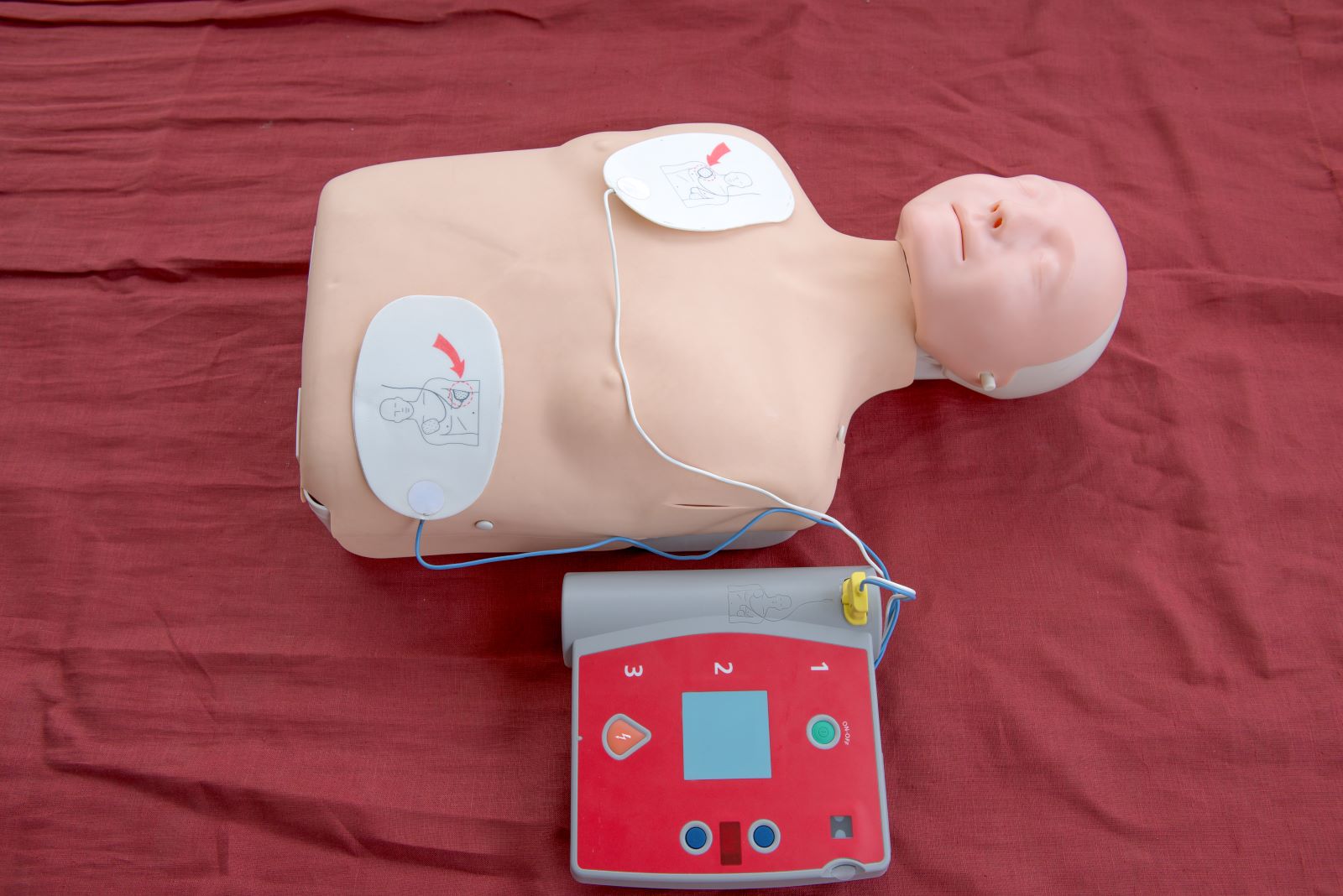CPR/AED Training
Creating Confidence to Care in an emergency situation.

CPR/AED & First Aid Training
CPR/AED Training
(BLS) Basic Life Support
The Emergency First Response CPR & AED course teaches the basic principles of CPR and how to deploy and use an Automated External Defibrillation (AED) in an emergency situation. This life saving device can increase a patient’s chance of survival from a cardiac arrest by fifty percent.
Emergency First Response Primary Care (CPR) teaches participants how to respond to life-threatening emergencies. The course focuses on primary care through a combination of knowledge development, skill development, and realistic scenario practice to make sure participants have the confidence in their ability to provide care when emergency situations arise.
Primary Care (CPR) skills taught in this course:
Scene Assessment, Barrier Use, Primary Assessment, Cardiopulmonary Resuscitation (CPR), Automated External Defibrillator (AED) Use, Serious Bleeding Management, Shock Management, Spinal Injury Management, Conscious, and Unconscious Choking Management.
This course is very popular for annual CPR (re-)training often required for the workplace.
Beware of online courses, these are rarely (if ever) accepted. The problem is so pervasive, OSHA and the American Heart Association recently published fraud alerts warning consumers against online-only CPR programs.
Why do people FREEZE in an emergency situation?
Find out why, scroll below.
Adequate Care Provided is Better than Perfect Care Withheld
Adequate Care Provided is Better than Perfect Care Withheld
When a medical emergency occurs, trained bystanders sometimes hesitate to act. Why? Because they’re in denial, or they’re afraid of doing something wrong. In today’s post, we’ll examine some of the reasons people don’t take action, and why imperfect care is better than no help at all.
In an emergency situation, hesitation is normal. The brain goes through three phases before deciding how to respond. These phases include:
Phase #1 Denial – This can’t be happening.
During this phase, you may be waiting for a loved one to stand up and say they’re okay, or for someone else to rush in and provide aid.
Phase #2 Deliberation – What should I do?
After accepting the situation, you consider the options: wait for someone else to step in, or take action.
Phase #3 Decision – Act on your plan
During Emergency First Response® (EFR) training, we teach people what steps to take in an emergency and acronyms to help them remember what to do next. In most situations, the first step is to contact professional emergency services, and the next step is to provide the best care you can.
Imperfect Care is Better than No Help At All
Doing something is always better than doing nothing. In a medical emergency, it is unlikely your actions will make the situation worse. Consider a scenario where someone you care about has a serious wound:
– An average adult can bleed to death in only five minutes.
– It can take 7–14 minutes for an ambulance to arrive (depending on the country and location urban vs. rural).
– Providing proper treatment within three minutes can significantly increase a patient’s odds of survival.

